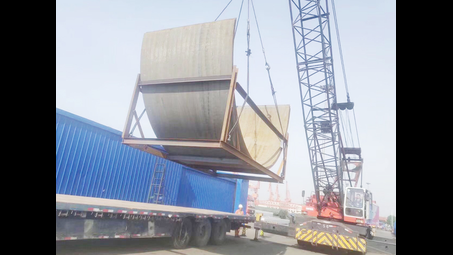S355 is slightly stronger than Q345B, and the welding is exactly the same. S355NL grade is a normalized steel (fine-grained steel) in the EN10025-3:2004 standard.
EN 10025-2 S355JR material is a low-alloy high-strength structural steel that meets the European standard EN10025.
ensteelstandardcom/FAQ/what-is-the-difference-between-s355-and-q345b-steel.html

What else can I help you with?
What is the density of steel s355?
7850 kg/m^3
What is the difference between S275 and S355?
Difference in strength, 275 and 355 refer to minimum yield stress of the material (275 MPa and 355 MPa).
What is the minimum yield strength of S355 steel?
The minimum yield strength of S355 is 355 MPa
What is EN equivalent of St 52-3?
DIN 1.0570 ST 52-3 is a type of steel. These can be carbon steel or other types of steel. A material data sheet will help figure out the equivalent.
What is the Young's Modulus for EN 10149-2 S355 MC?
The Young's Modulus for EN 10149-2 S355 MC, which is a high-strength low-alloy steel, is typically around 210 GPa (gigapascals). This value can vary slightly depending on the specific composition and processing of the steel. Young's Modulus is a measure of the stiffness of the material, indicating how much it deforms under stress.
What is the density of steel s355?
7850 kg/m^3
What is equivalent grade of S355 steel grade?
API 5l X52
What is the difference between S275 and S355?
Difference in strength, 275 and 355 refer to minimum yield stress of the material (275 MPa and 355 MPa).
IS 20Mn2 equivalent S355?
20Mn2 is not equivalent to S355. While both are structural steels, 20Mn2 is a manganese alloy steel primarily used in higher strength applications, whereas S355 is a European standard structural steel with specific yield strength requirements. The chemical composition and mechanical properties differ between the two, making them suitable for different applications. Always consult relevant material standards for precise equivalencies.
What is the minimum yield strength of S355 steel?
The minimum yield strength of S355 is 355 MPa
What are equivalent grades of cm 490 steel?
either S355 J2g3 or J0 depends on the sharpy value required
What is grade S355?
EN10025 S355J2+N structural steel has the higher Tensile of 510 MPa to 680 MPa and a Yield of 355 MPa, depending upon the structural steel thickness. ensteelstandardcom/FAQ/en10025-s355j2+n-structural-steel-plate-supplier.html
What is EN equivalent of St 52-3?
DIN 1.0570 ST 52-3 is a type of steel. These can be carbon steel or other types of steel. A material data sheet will help figure out the equivalent.
What is the Young's Modulus for EN 10149-2 S355 MC?
The Young's Modulus for EN 10149-2 S355 MC, which is a high-strength low-alloy steel, is typically around 210 GPa (gigapascals). This value can vary slightly depending on the specific composition and processing of the steel. Young's Modulus is a measure of the stiffness of the material, indicating how much it deforms under stress.
What is the chemical composition of S355 steel grade?
The composition of S355 is Carbon - 0.23% max Manganese - 1.60% max Silicon - 0.50% max Sulfur - 0.05% max Phosphorus 0.05% max, Copper - 0.55% max Nitrogen - 0.12% max Tensile yield minimum 490/630
What is the allowable stress for material S355?
The allowable stress for S355 steel typically depends on its application and design standards. In general, the yield strength of S355 is around 355 MPa, and the allowable stress is often taken as a fraction of this value, usually around 0.6 to 0.7 times the yield strength, depending on the safety factors applied. For structural applications, this can translate to an allowable stress of approximately 210 to 250 MPa. Always consult relevant design codes for precise calculations.
What is equivalent gr of astm A572 in IS?
S355 in bs
